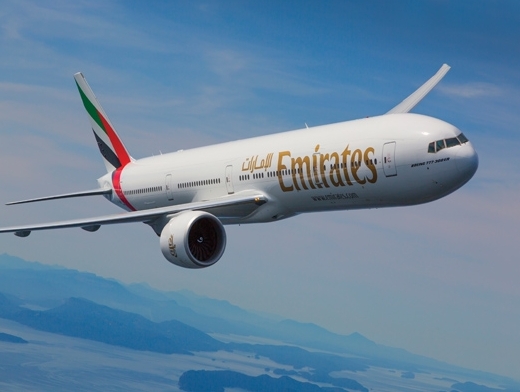
Emirates deploys new navigation technology to increase cargo capacity to Kabul
Feb 26, 2019: Emirates Flight Operations has developed a new navigation technique that allows the airline to carry additional cargo into Kabul International airport. The Dubai-based airline operates a daily flight into Kabul International airport with its Boeing 777-300ER aircraft. Kabul airport is situated in a wide valley at an elevation of 5,800 feet and […]

Feb 26, 2019: Emirates Flight Operations has developed a new navigation technique that allows the airline to carry additional cargo into Kabul International airport.
The Dubai-based airline operates a daily flight into Kabul International airport with its Boeing 777-300ER aircraft. Kabul airport is situated in a wide valley at an elevation of 5,800 feet and is surrounded by mountains that are over 11,000 feet tall. The airport has a number of constraints associated with it because of the challenging terrain, Air Traffic Control (ATC) and other security requirements.
The innovative missed-approach procedure developed by the airline has replaced an older technique that required cargo bound for Kabul to be offloaded in Dubai during low-cloud or poor visibility weather conditions at destination. A Missed Approach is a published procedure which must be followed in the event that an aircraft conducting an Instrument Approach for landing is unable to continue the approach and/or achieve the required visual references to be able to complete a landing.
This navigation procedure with an easier climb gradient for Kabul airport's Runway 29 takes advantage of the Boeing 777 aircraft's superior navigational accuracy. The team worked with a specialist flight design agency, DFS Aviation Services, with regulatory credentials to analyse the terrain around the airport and develop a new procedure that could be implemented without delays in working with the local ATC.
Hence, within the first three months of implementation, the new solution gave Emirates the capability for carrying an additional 250 tonnes of cargo into Kabul during low-cloud conditions.
This new technique has also resulted in more streamlined cargo operations to Kabul, increased customer satisfaction, and enhanced fuel efficiency.
Once the initial design was ready, it was coded into the Emirates Flight Management System and tested extensively on flight simulators to confirm theoretical performance calculations as well as ensuring that the aircraft would indeed be able to clear any obstacles in the case of a go around.
Finally, the Flight Operations Systems team then developed detailed training guidance in order to support pilots flying to the airport.
In addition to the new technique developed for Kabul airport's Runway 29, Emirates has also used advanced technology to put together detailed guidance for pilots to operate to Kabul's Runway 11 ensuring the highest possible levels of safety and efficiency. Emirates' Flight Operations Support team have also used similar technology to successfully enhance operational efficiency at other airports such as Seychelles, Addis Ababa, Eldoret and Basra.

